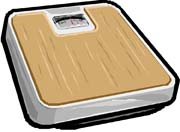 |
| Family | | | Food | | | Garden | | | House & Home | | | Money |
| Articles | | | Coloring | | | Cookbooks | | | Reviews | | | Newsletter |
SherriAllen.com Home > Learning Central > A-weigh We Go |
||||||||
 |
| Family | | | Food | | | Garden | | | House & Home | | | Money |
| Articles | | | Coloring | | | Cookbooks | | | Reviews | | | Newsletter |
SherriAllen.com Home > Learning Central > A-weigh We Go |
||||||||
A-Weigh We GoLevel: K - 1 |
 |
Free Newsletter! Related Articles:
Waiting Room Boredom Remedies | |
Observing, estimating, weighing and comparing are all essential mathematics skills. |
|||
|
What You Need
What to Do
Source: U.S. Department of Education, Office of Communications and Outreach, "Helping Your Child Learn Mathematics," Washington, D.C., 2005 send feedback to: feedback@sherriallen.com. |
|||


|
home
|
family
|
food
|
garden
|
house & home
|
money
|
article archive
|
reviews
|
coloring pages
|
contact us
|
terms and conditions . privacy policy |
copyright © 2003 - 2006 by Sherri Allen all rights reserved |